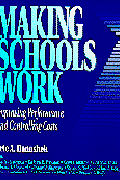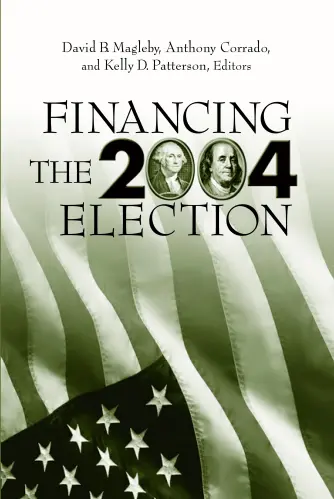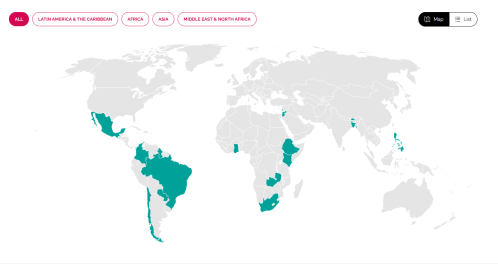Mr. Chairman and Members of the Committee:
I am Russ Whitehurst. I direct the Brown Center on Education Policy at the Brookings Institution. Prior to holding my present position, I was the founding director of the Institute of Education Sciences within the U.S. Department of Education. Before entering government service I had a long career as a researcher and academic administrator.
Thank you for the invitation to testify. I am pleased that there is such interest and leadership in addressing the quality of education research in America.
Everyone in this room knows that education is important. I expect that all of us have had an experience with a teacher, a class, an educational institution, or through independent learning that has changed our lives. I certainly have. The American dream of opportunity and advancement and the educational system of the United State are inextricably connected. This has been true throughout our history. Indeed, well before the country was founded it was typical for colonial villages that had grown to more than a few hundred people to establish and fund a public school, with the first dating to 1639. Since that time, we have continued to value education and invest in it. But in an age of globalization and the advent of a knowledge based economy, the imperative to educate and educate well is stronger than it has ever been. The evidence that nations with a better educated populace experience higher growth rates is compelling, and during the current economic downturn the unemployment rate in the U.S. for young adults with just a high school diploma has been three times the rate for those with a college degree.
High quality education research is critical to the nation’s effort to deliver better education and a future of opportunity to our citizens. Without good evidence on the condition of education, what works and what does not, fundamental processes of learning and instruction, and breakthrough instructional technologies we are destined to embrace education policies that move us forward, backward, and sideways without even knowing in which of those directions we’re heading. Without good education research, our approaches to education reform are more akin to fashion and fancy — the width of a man’s tie or the length of a woman’s skirt — than to anything that is rational and benefits from a systematic examination of evidence.
Think of what federal investments in agricultural research have accomplished. My grandparents were farmers during the transition from the way things had always been to farming based on the knowledge produced by agricultural research. I remember well my grandfather coming back from a meeting with an agricultural extension agent excited about what new seeds and new approaches to crop rotation could do for the family farm. And because he was an early and eager adopter of research-based approaches to farming, he was always ahead of his neighbors in wringing a living from his land. These days America is the breadbasket for the world, largely because we invested in agricultural research and figured out how to disseminate the knowledge derived from that research to those who farm. We are on the cusp of a transformation of education to an evidence-based field that will have many similarities to the changes in agriculture that my grandparents experienced. The actions this Committee takes as it shapes the federal role in education research will have far reaching effects on the quality and productivity of our schools, and through that on our economy and future.
Mr. Chairman, the Education Sciences Reform Act, which originated in this subcommittee in 2001 and currently governs the education research enterprise at the Institute of Education Sciences within the U.S. Department of Education, made great strides towards improving the quality and independence of federally sponsored education research. Prior to that legislation, the federal stewardship of education research was widely viewed as a failure. To that point, in 1999 the National Academies of Science came to the conclusion that:
One striking fact is that the complex world of education – unlike defense, health care, or industrial production – does not rest on a strong research base. In no other field are personal experience and ideology so frequently relied on to make policy choices, and in no other field is the research base so inadequate and little used.
Since the National Academies report and as a direct result of Education Sciences Reform Act we have seen considerable progress in the quality and relevance of education research. Evidence for this comes from numerous sources, not the least of which is the Office of Management and Budget. OMB’s most recent program assessment of the Institute of Education Sciences concluded that:
Since its creation by the Education Sciences Reform Act of 2002, IES has transformed the quality and rigor of education research within the Department of Education and increased the demand for scientifically based evidence of effectiveness in the education field as a whole.
Let me give you some examples of things we’ve learned from recent education research that are very important to improving America’s schools and student achievement.
- On teachers
- Teachers vary dramatically in effectiveness — a very effective compared to a very ineffective teacher can create achievement gains for a child in one year that can wipe out a third of the achievement gap between white and black students
- On-the-job performance is the single strong predictor of how good a teacher will be in the future — almost every other observable characteristic of teachers is at best only weakly predictive of how they will perform in the classroom, e.g. whether they are regularly certified or not, were trained in a school of education or not, got a high or low score on a certification exam, received a lot of professional development or a little, and were mentored as novices or not tells us almost nothing about how effective they will be as teachers
- Most professional development programs for teachers are a waste of time and money
- On the organization of schools, choice, and competition
- No excuses charter schools in urban areas do a dramatically better job than traditional public schools in raising student achievement
- Armed with good information on school performance and the ability to choose schools, low-income parents choose better schools than the ones to which their school district would assign their children, and their children do better academically as a result
- Schools that are subject to competition from other schools for students improve more than schools not subject to competition
- On standards, accountability, and curriculum
- The quality of state standards for what students should know bears no relationship to student achievement — states with the best standards can have low levels of achievement relative to states with weak standards and vice-versa
- No Child Left Behind-type accountability for schools and districts raises student achievement modestly, with the effects focused in mathematics in the earlier grades
- Curriculum choices can make a sizable difference — for example the difference between using the most effective vs. the least effective elementary school mathematics curriculum, each costing about the same, is as much as a third of a year of learning over the course of one school year
- Presently available educational technology programs as used in schools do not raise student achievement
- On the effectiveness of federally funded education programs
- There is a long-list of federal education programs that have no measurable effect on student outcomes, including
- The 21st Century Community Learning Centers Program (afterschool)
- Even Start
- Head Start (for outcomes at the end of first grade)
- Upward Bound
- Reading First
- There is a long-list of federal education programs that have no measurable effect on student outcomes, including
- On basic learning and instructional processes
- Spacing the occasions when students are asked to study related content rather than massing the study of that content into a short time frame remarkably increases learning and retention
- Testing students on the content of their classroom assignments produces substantially more learning than the same amount of time spent restudying the material
I could provide many more pages of example of things we know now about education that we did not know 15 years ago. If knowledge is power, we’re in much better shape than we used to be and that augurs well for the future.
The Education Sciences Reform Act is overdue for reauthorization. I will not take you through a to-do list for reauthorizing the law, one reason being that the National Board for Education Sciences has already generated such a list and I’m supportive of the Board’s recommendations. Let me simply suggest four principles that should underlie the reauthorization.
- If It Ain’t Broke Don’t Fix It — There are various groups, with the American Educational Research Association being the most prominent, that would have you make fundamental changes in the law that appeal to their interests. They would, for example, have you change the definitions of what constitutes rigorous research and evaluation to lower the methodological bar their members confront when trying to obtain federal grant money, and they would have you separate the National Center for Education Statistics from the Institute of Education Sciences in order to create another federal entity that they can try to influence and with which they could curry favor. The key question you should ask of advocates of any significant changes in the language in the bill is, “What evidence do you have you that the current language has had bad effects?” ESRA a pretty good piece of legislation and most efforts to change it are going to come from organizations that want a return to the wonderful days of yesteryear when education research produced little of value except funding for education researchers.
- Independence Is Fundamental — One of the most important advances in the Education Sciences Reform Act was to create a greater degree of independence between the Department’s research arm and the political leadership of the Department. I led the Department’s research office for 8 years under two secretaries and multiple lesser political appointees. I had good relationships with the political leadership of the Department and we worked well together, but I needed every bit of independence granted me by statute along with a fair amount of grit to keep my office and its functions from being politicized. I think this is in the nature of the beast rather than the personalities or political parties involved. Anything you can do to further arm future IES directors with independence from political direction will be positive. At the same time, the IES director needs to be inside the tent in order for the Department to benefit from education research and to have education research informed by insights on federal policies.
- The Regional Educational Lab Program (the RELs) Is Broken and Should be Fixed — The REL program goes back to 1966 and the very first Elementary and Secondary Education Act. Since then, year in and year out, the RELs have pulled down a significant proportion of the total federal investment in education R&D with little to show of value from that investment and a lot to show that should be an embarrassment. I don’t think any amount of tinkering with the legislative language that authorizes the RELs or aggressive intervention by the Institute of Education Sciences can fix what is wrong with the program. But there is a function the RELs are intended to serve that is desperately needed: helping states answer questions about the effectiveness and productivity of their own education programs using state administrative data. The goal of having statewide longitudinal education databases in every state was pursued vigorously in the George W. Bush administration. The Obama administration has added substantially to funding for this effort through the American Recovery and Reinvestment Act of 2009. In the near future all states will have data warehouses with longitudinal student achievement data linked to a variety of education input variables. However, having data available and being able to use it are two different things. Only a few states have the staff capacity within their state education office to conduct analyses of longitudinal data to address policy questions. This means that most policy initiatives fly blind, both in original design and subsequent appraisal. RELs might be assigned through legislation to carry out this task, but they have multiple masters (including the federal government, their own boards, the governors and state legislatures in their region), they vary substantially in their capabilities, and they have no easy way to prioritize among various claims on their resources. It would be much better in my view to eliminate the REL program and substitute for it a research voucher program for state education departments. The current REL budget would be split among states, taking some account of state population but making sure that smaller states receive a cut of the pie that is large enough to be useful. The states could spend their vouchers to contract for research on issues of high interest to them. The research plans and products would undergo methodological review at IES to assure quality, but would otherwise be independent of the Department. The current RELs could compete for this work. If they could do the work well they would prosper. If they could not they would have to go into another line of work. It is a marketplace solution to a problem that has proven intractable to previous legislative and administrative solutions.
- You Get What You Pay For — Although federal budgetary support for education research has increased in the last decade, it remains a pittance when compared with levels of investment in research, evaluation, and statistics in other areas of the economy. For example, more than 40% of the discretionary budget of the U.S. Department of Health and Human Services is invested in knowledge production and dissemination through the National Institutes of Health, the Centers for Disease Control, the Food and Drug Administration, and many other operational components. In the U.S. Department of Education, the corresponding investment is less than 1%. In education research and development, no less than in R&D in health or transportation or communication or energy or agriculture, the public gets what it pays for.
Finally, I want to address the federal role in incorporating the findings from educational research into program mandates. NCLB uses the phrase “scientifically-based research” 111 times, and includes many mandates for states and local education agencies to base their practices on the findings from such research. The most extreme example is the now defunct program, Reading First, which dictated how early reading instruction was to be delivered at a very granular level based on research findings. There is no evidence that children are reading better as a result. It is a fundamental mistake, in my view, for Congress to dictate how states and LEAs should use findings from research. Even if the research were absolutely definitive, which it seldom is; and Congress could translate it into legislation without distortion, which it can’t; and bureaucrats in the U.S. Department of Education could implement it unimpeachably, which is unlikely; science is dynamic. We shouldn’t accept a process that requires Congress to rewrite legislation in order to bring education practice in line with evolving research findings.
Instead of telling states and local education agencies what they should do and appealing to research as the justification, Congress should focus on creating incentives for practitioners and policy makers to want to incorporate findings from the best research into their programs. Those incentives should be around the performance of schools. If those who are responsible for the management of schools are held accountable for schools’ performance, and if research findings are both readily consumable and provide a obvious boost to school performance, then the research will be utilized. When my grandfather learned about research findings that would give him a leg up in the yield from his farm he didn’t need to be told by big government that he had to base his practices on that research. It was in his self-interest to do so because he was accountable for earning a living from his farm. Likewise, education providers will use research when it helps them do something for which they’re accountable.
There are two ways to fashion an accountability system that will create a demand for research findings. One is top-down regulatory accountability as we’ve seen in NCLB — Washington says, “Here are your targets for student achievement. If you don’t meet them the following unpleasant things will happen.” The other approach is bottom-up market place accountability — Parents are given choices of where to send their children to school and good information on school performance. Funding follows the child. Schools that aren’t performing well lose students and funding. The managers of those schools are motivated to improve their performance and seek solutions, including those from good research.
I’m in favor of the market-based approach to creating demand for education research and I urge you to consider it in the context of the reauthorization of ESEA.
We know much more about what works and what doesn’t in education than we did 15 years ago as a result of advances in research, but our level of ignorance dwarfs our understanding by orders of magnitude. It has been so in the early years of the transformation of other fields to evidence-based practice. Moving education to a point at which our research base is sufficient to assure a good education for every student is the work of a generation, not of a few years. We’ve started and we’re moving in the right direction. I appreciate this Committee’s understanding of the importance of the work and the critical role the federal government plays in advancing it.






Commentary
TestimonyThe Federal Role in Education Research: Providing Relevant Information to Students, Parents, and Educators
November 16, 2011